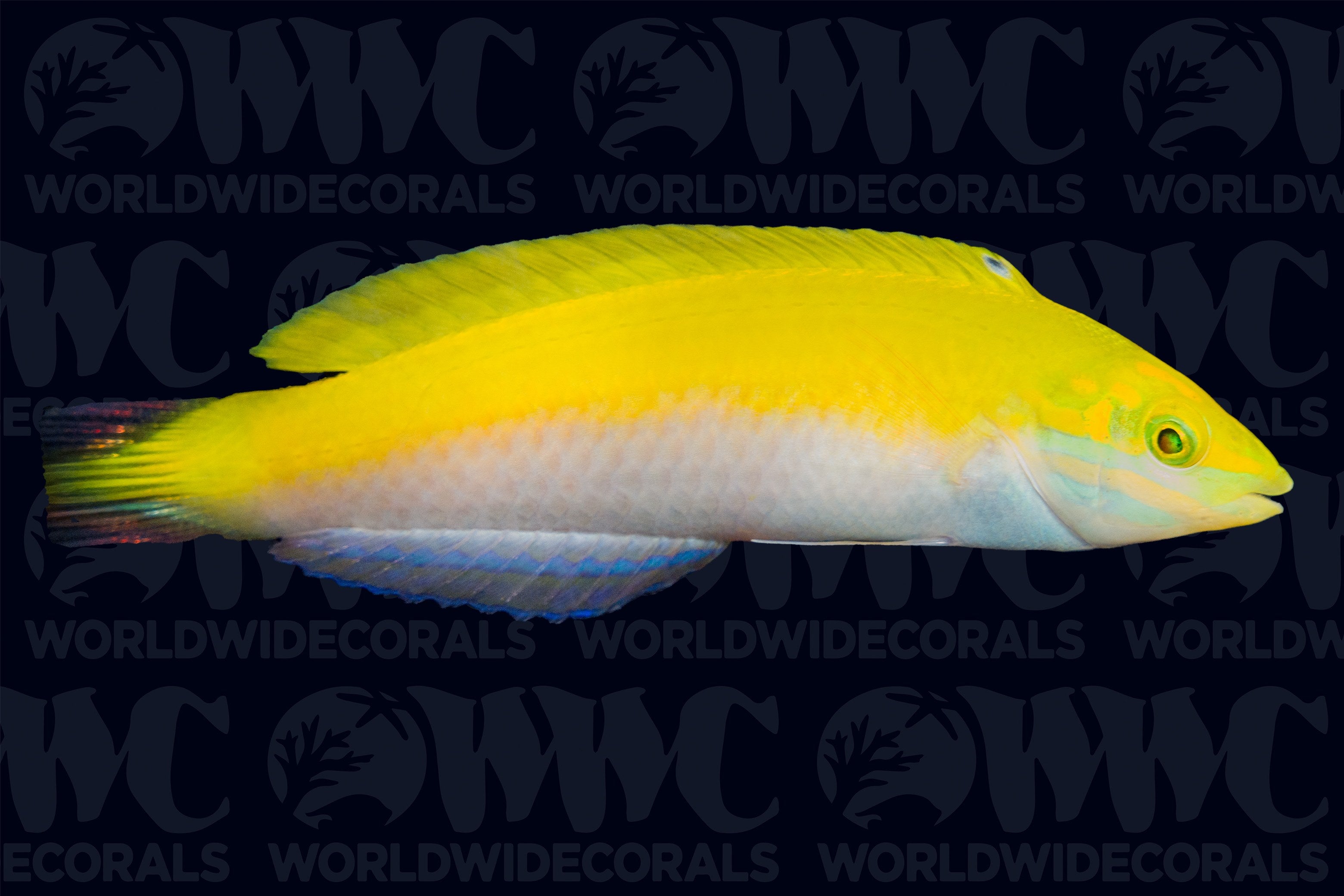Description
Halichoeres leucoxanthus
The Canarytop Wrasse is a vibrant and active reef fish, admired for its striking coloration and peaceful temperament. Males feature a white belly, yellow upper body, and four distinct black spots—three on the dorsal fin and one on the caudal peduncle—while females lack the dorsal spots. Coloration may vary based on age, collection location, and breeding cycles. This species thrives in aquariums with plenty of live rock, providing essential hiding spots like caves and crevices. A deep sandy substrate is crucial, as they bury themselves at night or when frightened. Given their tendency to jump, a secure, tight-fitting lid is highly recommended. Peaceful and reef-safe, the Canarytop Wrasse coexists well with most tankmates. It is carnivorous, feeding on a variety of frozen foods such as mysis and brine shrimp, as well as high-quality pellets and flakes, ideally offered 2–3 times daily. Not only is it visually appealing, but it also provides functional benefits by helping control pests like flatworms and bristle worms. Reaching up to 5 inches in length, this wrasse requires a minimum tank size of 70 gallons. In the wild, it inhabits the Indian Ocean near the Andaman Sea, typically found along sandy rubble slopes and reef edges at depths of up to 200 feet.
The Canarytop Wrasse is a vibrant and active reef fish, admired for its striking coloration and peaceful temperament. Males feature a white belly, yellow upper body, and four distinct black spots—three on the dorsal fin and one on the caudal peduncle—while females lack the dorsal spots. Coloration may vary based on age, collection location, and breeding cycles. This species thrives in aquariums with plenty of live rock, providing essential hiding spots like caves and crevices. A deep sandy substrate is crucial, as they bury themselves at night or when frightened. Given their tendency to jump, a secure, tight-fitting lid is highly recommended. Peaceful and reef-safe, the Canarytop Wrasse coexists well with most tankmates. It is carnivorous, feeding on a variety of frozen foods such as mysis and brine shrimp, as well as high-quality pellets and flakes, ideally offered 2–3 times daily. Not only is it visually appealing, but it also provides functional benefits by helping control pests like flatworms and bristle worms. Reaching up to 5 inches in length, this wrasse requires a minimum tank size of 70 gallons. In the wild, it inhabits the Indian Ocean near the Andaman Sea, typically found along sandy rubble slopes and reef edges at depths of up to 200 feet.
3 DAY GUARANTEE | Hassle Free | 100% Satisfaction | Online Orders Only


